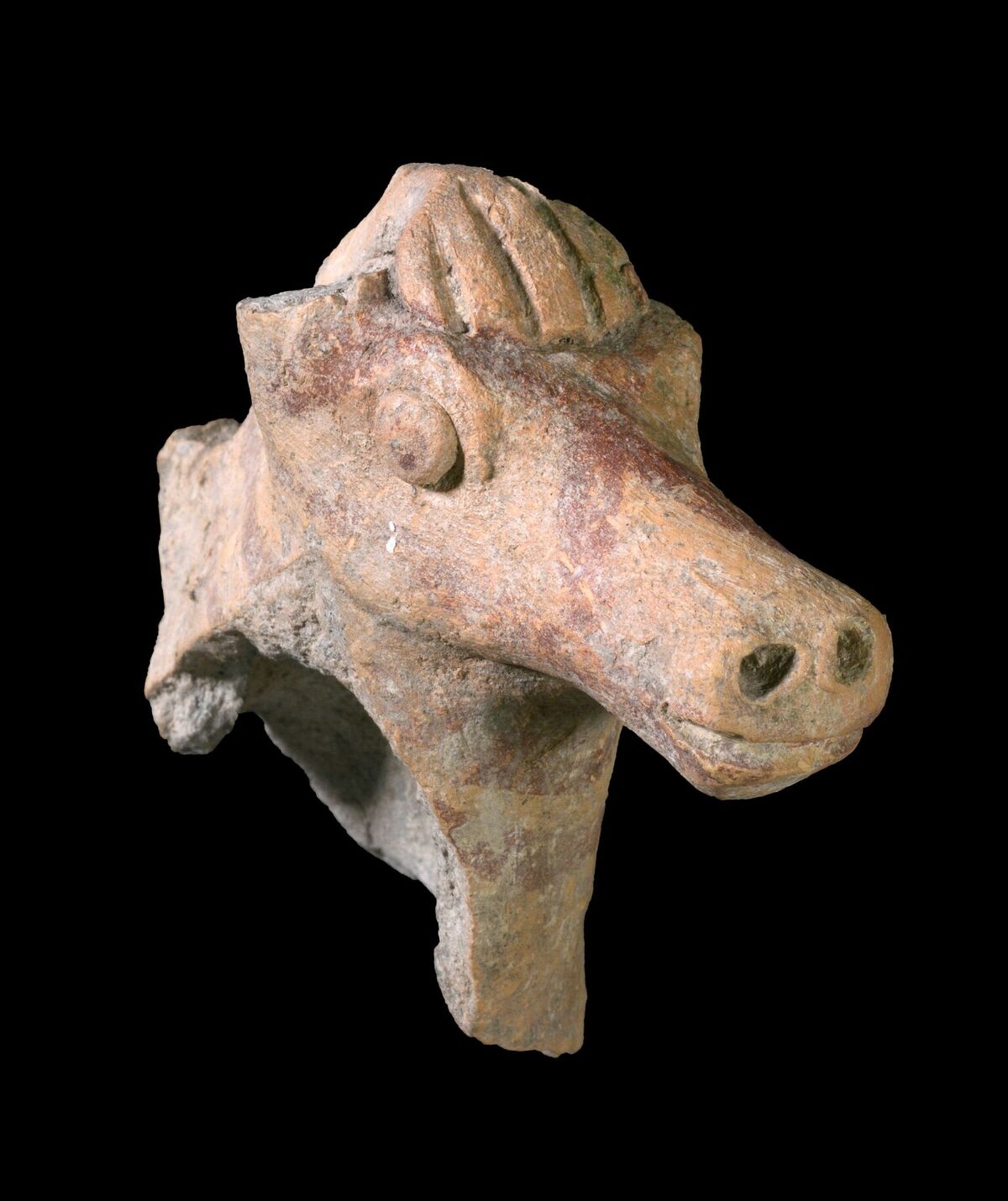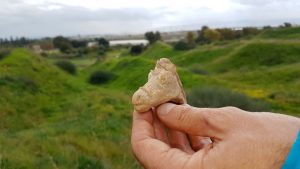
Two horse-head statuettes were found after the recent heavy downpours
Two well crafted clay horse heads, exposed by the recent rains in two different locations in the north of Israel, have come to light in the last month. One, dating from the 8th-century BCE Israelite kingdom of Jezebel and Ahab, 2800 years ago, was found in Kfar Ruppin near Beth Shean; the other is from the Hellenist period, 2200 years ago and was discovered in Tel Akko. Each of the individuals responsible for the finds will receive a certificate of good citizenship from the Israel Antiquities Authority.
Dr. Adi Ehrlich of Haifa University pointed out that horse statuettes became common in the Holy Land during the first millenia BCE.
“In the Iron Age, the use of horses for transport greatly increased, as reflected in biblical accounts of Pharoah’s chariots and horsemen drowning in the Red Sea, and the story of Deborah and Barak’s battle against Sisera [general of Hazor], in which the heavy battle-chariots became bogged down in the mud. Horses were depicted both with riders and without in this period, whereas in the later, Persian period, they almost always had riders. They appear both as statuettes, and in the form of horse-shaped pitchers.”
The riders seem to represent horse-back warriors, a class widely revered by the common people. Throughout the near East, ancient kings were often drawn (or etched on clay reliefs) riding on – or drawn in chariots by – heavily ornamented war-horses. Key to military success, they were the tanks of the ancient world, and therefore represented the power and majesty of the monarch. The biblical book of Ecclesiastes (ch. 11 vs. 7) describes a reversal of the natural order of human hierarchy thus: “I have seen slaves on horses, and princes walking on the ground like slaves.”
Horses were prized imports to the Holy Land from Egypt, Celicia in south-east Anatolia (Turkey) and Central Asia, although presumably they were eventually also bred here in King Solomon’s fabled royal stables in Meggiddo. The prophet Zacharia’s prophecy of the four winds (ch 6 vs. 1-8) describes them as chariots drawn by horses of varying colors, and in antiquity many cultures describe the gods driving horse-drawn chariots across the sky. The Greek sun-god Helios is just one example.
But the horses might in fact represent nothing so exalted or important, but just be toys fashioned in clay to amuse youngsters.

